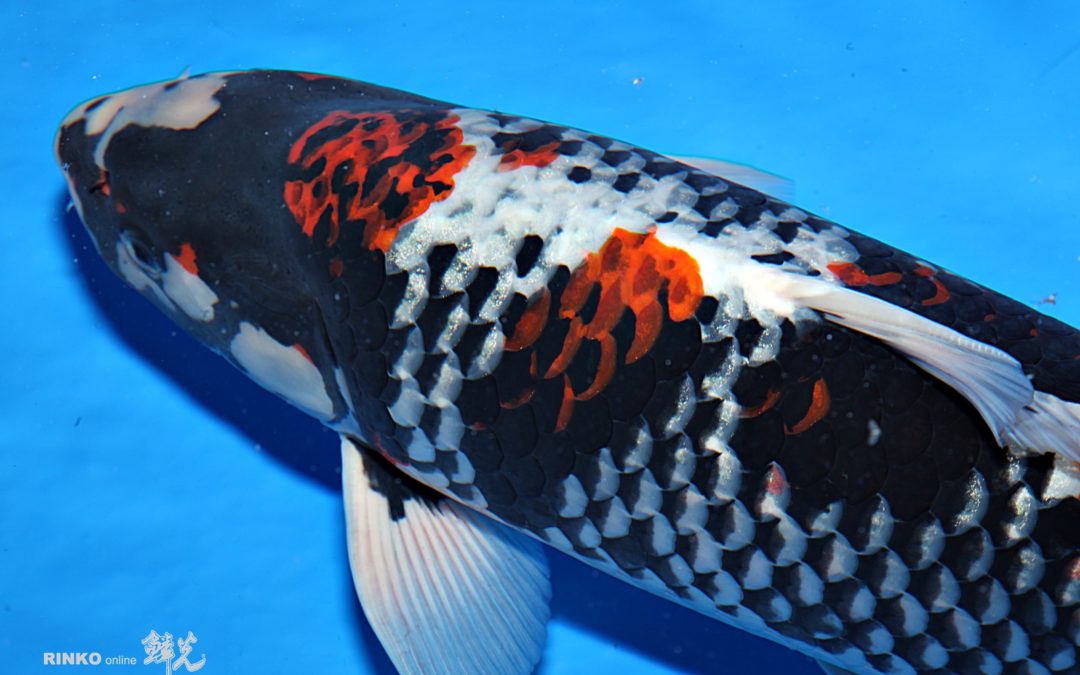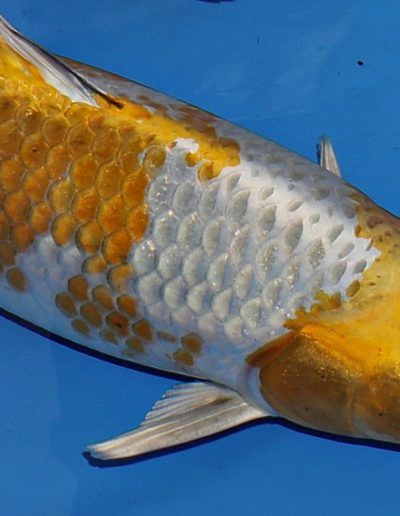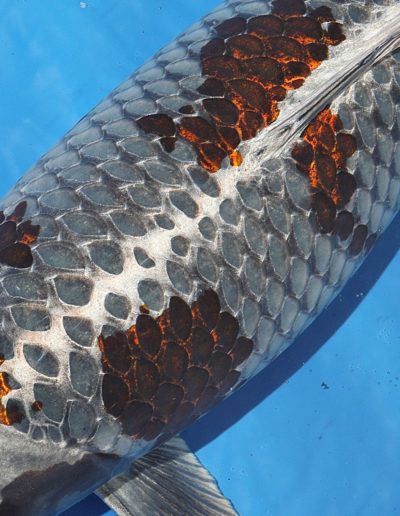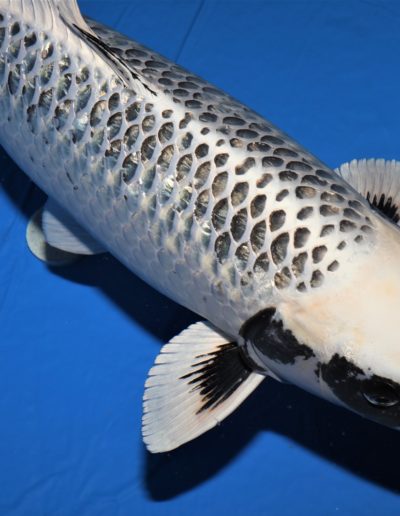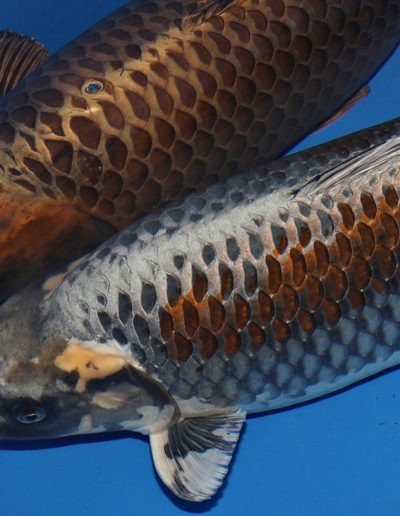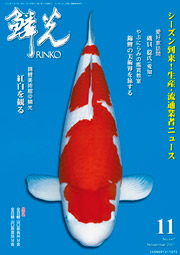The starting point of Nishikigoi appreciation is the orderly arrangement of scales. Koi is written as 鯉 in kanji. The left part of 鯉 is 魚, 魚 means fish and the right part of 鯉 is 里, 里 means a belt of segmented fields. The kanji 里 indicates something orderly arranged. In the case of 鯉, the orderly scales becomes one of the most important requirements for Nishikigoi.
There are many shapes of patterns on scales, such as semicircle, circle and diamond. The basic form of scales from popular varieties are very familiar to many people, here are some pictures of unique and interesting scales from the shows and events in Japan. It’s always fun to find something new and special.

